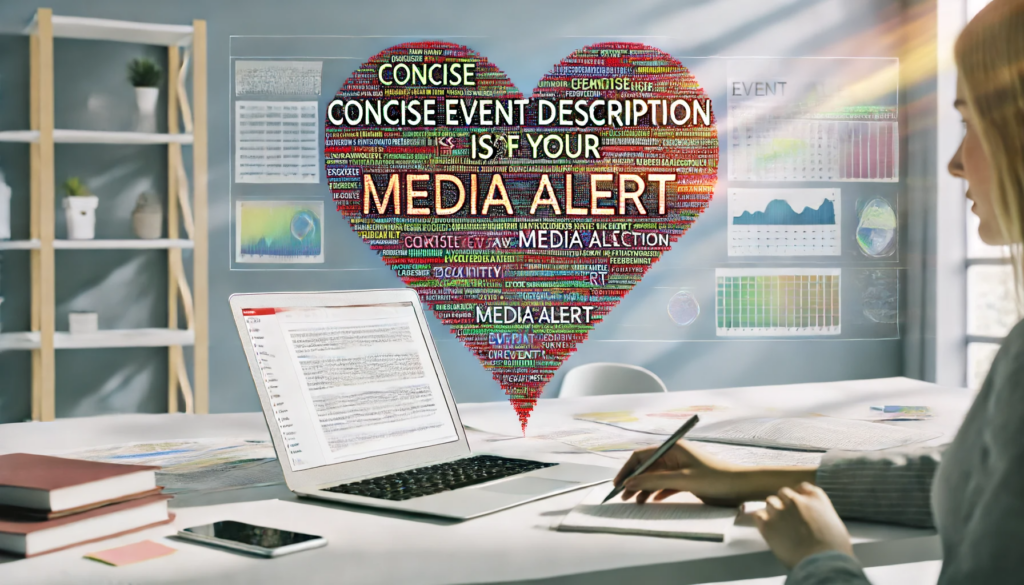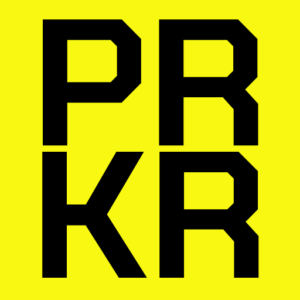Ready to make your event the talk of the town? Writing a media alert is your first step to grabbing journalists’ attention and getting the coverage your event deserves. Media alerts are concise, informative invitations that spotlight your upcoming events or important announcements.
Start with a catchy headline that demands attention, then dive into the essential event details using the 5 Ws (Who, What, When, Where, Why). These key elements ensure your media alert is clear, informative, and irresistible to journalists. Don’t forget to include your contact information for follow-up.
Tailor your alert to your media audience with familiar language and engaging visuals to boost its appeal. Send it well in advance, giving journalists enough time to plan, and always respond promptly if they reach out. Mastering this communication best practice will transform your event publicity. We’ve got more tips to enhance your skills, so let’s dive into the nitty-gritty and make your event shine!
Introduction to Media Alerts
You might be wondering, what exactly is a media alert?

It’s a vital tool in public relations, designed to grab the attention of journalists and media outlets.
Understanding its importance could make all the difference in getting your event or news story noticed.
What is a Media Alert?
Let’s dive right into the world of media alerts: these are concise, informative notices sent to journalists and media outlets to announce an upcoming event, aiming to drum up media coverage and pique public interest. The primary purpose of a media alert is to generate interest and secure coverage for your event.
Imagine you’re planning a major product launch or a charity fundraiser. You want media attention, right? That’s where a media alert comes in. You send it out a few days before your event, giving journalists enough time to consider if your event fits their beat and schedule.
A media alert isn’t a press release. It’s shorter, straight to the point, and focuses on the essential details of the upcoming event. It typically includes the who, what, when, where, and why of the event. This informative notice is your chance to convince the media that your event is newsworthy and should be covered.
In the busy world of journalism, media alerts are essential tools to get your event noticed. So, understanding how to write an effective media alert can significantly increase your chances of getting the media coverage your event deserves.
Importance of Media Alerts in PR
Understanding the importance of media alerts in public relations is key to generating media buzz and securing coverage for your event. Media alerts serve as a powerful tool to attract media attention, typically dispatched to journalists and media outlets ahead of an event. Their primary purpose is to ensure event coverage by providing all the necessary details that a journalist might need.

You might wonder, how do media alerts differ from press releases? Here’s how:
- Media alerts are succinct, typically outlining the who, what, when, where, and why of your event. They’re meant to be quick and easy to read, unlike press releases which often include more detailed information.
- Media alerts are sent out before an event to notify the press and secure their attendance, while press releases are usually issued after the fact to share news and updates.
- A media alert’s main goal is to secure coverage for an event, while a press release aims to share news and updates with a broader audience.
- Given their distinct purposes, it’s essential to use them strategically in your public relations toolkit.
Understanding this difference and the importance of media alerts in public relations can elevate your PR game.
Key Elements of a Media Alert
Let’s turn our attention to the key elements of a media alert.
Remember, the core details are the 5 Ws: Who, What, When, Where, and Why.
And don’t forget, crafting a compelling headline and including the right contact information are equally essential.
The 5 Ws: Who, What, When, Where, and Why
In crafting your media alert, remember to thoroughly address the 5 Ws: Who, What, When, Where, and Why, as these elements ensure you provide all necessary information to the media. These essential questions guide the media to a full understanding of your event and its relevance.
- Who refers to the parties involved in the event. Are there notable speakers or guests? This helps the media identify key players and sources.
- What is about the core purpose of the event. What’s happening that’s newsworthy? This is where you convey information about the event’s significance.
- When gives the media the exact date and time of the event. This helps them schedule and plan their coverage accordingly.
- Where is the location details of your event. If it’s a virtual event, provide the online access details.
- Why explains the reason behind the event. Why should the media care? This is where you highlight the newsworthiness of your event.
Crafting a Compelling Headline
Crafting a compelling headline for your media alert is like creating a magnetic pull that grabs a journalist’s attention amidst a sea of emails. Your headline should be catchy, concise, and give a glimpse of the story without revealing everything. A well-crafted headline can be the difference between your media advisory being read or ignored.

The importance of crafting a compelling headline can’t be overstated. It has a significant role in whether or not your media alert grabs the media’s attention. However, creating an effective headline isn’t as difficult as it might seem.
Here are some tips on how to create headlines that grab attention:
| Tips for Crafting Headlines | Examples |
|---|---|
| Keep it concise and catchy | “New Tech Startup Disrupts Market” |
| Use strong, active verbs | “Local Charity Rallies Community Support” |
| Make it specific | “Renowned Chef to Open Vegan Restaurant in City” |
| Include figures if applicable | “Company X Sees 50% Profit Increase” |
| Make it relevant and timely | “Eco-Friendly Store Launches Earth Day Sale” |
Contact Information
While crafting your media alert, don’t underestimate the importance of providing accurate and detailed contact information for immediate media follow-up. This is your direct line of communication with the media, and it’s crucial for fostering relationships with journalists. Therefore, the placement and format of this information matter significantly.

Your contact information should be easy to find and comprehend. Typically, it should be placed at the end of the media alert, following the event details and news content. Remember, journalists are busy people, and they appreciate clear, straightforward details that save them time.
In terms of format, here are some points to remember:
- Include your full name, phone number, and email address.
- If applicable, provide your job title and the organization you represent.
- For press releases, consider including a specific media contact.
- If available, add a backup contact to ensure media inquiries won’t go unanswered.
Ensure your contact information is accurate and up-to-date. Providing incorrect details can lead to missed opportunities and damage your credibility. Don’t let a minor oversight hinder your media alert’s success.
Writing the Body of a Media Alert
Now, let’s move on to crafting the body of your media alert.
This is where you’ll provide a succinct description of your event, making sure to highlight any potential visual opportunities.
Concise Event Description
To generate interest and ensure the right message reaches the media, you’ll need to write a concise and clear description of your event in the body of your media alert. Your concise event description is the heart of your media alert and the primary tool to attract media professionals to attend your event.

Effective media advisories include critical elements in their event descriptions:
- Who: Identify the key players involved. This could be your organization, notable guests, or speakers.
- What: Briefly explain what the event is about. Be specific and compelling.
- When and Where: Provide the date, time, and location. If it’s a virtual event, include the platform and how to access it.
- Why: Explain why this event matters. Why should it interest the media and their audience?
Your description should be succinct, informative, and engaging. You want to give just enough information to pique the interest of media professionals, but not so much that it becomes overwhelming or loses its appeal. Remember, your goal is to inspire curiosity and motivate them to cover your event.
Including Visual Opportunities
In crafting your media alert, don’t overlook the power of visual opportunities, as they can significantly enhance the appeal for television and photojournalists. Your media advisory template should always consider the media to attend, and highlighting these elements can make a significant difference.

Visual opportunities can be anything from a notable speaker, an interactive demonstration, or a unique location. It’s crucial to highlight these elements in the ‘What’ section of your media alert. For instance, mentioning that a renowned artist will be unveiling a new sculpture can attract photojournalists looking for visually compelling stories.
Here’s a simple table to guide you:
| Section | Information | Example |
|---|---|---|
| What | Highlight visual opportunities | “Renowned artist unveiling a new sculpture” |
| Who | Mention who will provide the visual opportunities | “Artist X, known for her innovative designs” |
| Why | Explain why these visuals are newsworthy | “First sculpture of its kind in the city” |
| Visuals | Detail the potential shots and angles | “Artist at work, reactions of first-time viewers” |
Distribution Strategies
Once you’ve crafted a compelling media alert, it’s crucial to get your timing right and choose the most effective distribution channels.
Be mindful of when you send it out, as this can greatly impact its visibility.
Also, consider the various platforms available and select those most likely to reach your intended audience.
Timing and Scheduling
Getting the timing right for sending out a media alert can significantly increase its effectiveness and visibility. When you’re ready to send your media advisory, it’s crucial to consider the best time to reach your targeted media outlets.

The general rule of thumb is to send out your well-crafted media alert 48 to 72 hours in advance of the news event, such as press conferences. This gives journalists ample time to plan their schedules and accommodate your event.
However, timing isn’t just about when to send the initial advisory. There are a few other factors you need to keep in mind:
- Follow Up: You should always follow up on your media alerts. Media inquiries are often handled by busy people, so a gentle reminder can go a long way. This can be done 24 to 48 hours after the initial alert.
- Day of the Week: Avoid sending alerts on Fridays or weekends when journalists are less likely to check their emails.
- Time of Day: Mornings are usually the best time of day to send media alerts as this is when most journalists plan their day.
- Holidays: Avoid sending media alerts on public holidays when journalists are likely off work.
Choosing the Right Distribution Channels

After you’ve carefully crafted your media alert and planned your timing, the next step is to choose the right distribution channels to ensure your message reaches the right journalists and media outlets.
The first option is direct outreach, which means personally contacting reporters or editors who might be interested in your news. This method allows you to build a relationship with the media, but it can be time-consuming. You’ll need to research each contact, tailor your message to their beat or area of coverage, and follow up to ensure they received your media alert.
Alternatively, you can use press release distribution services. These platforms send your media alerts to a broad network of journalists and outlets. The benefits are clear: a wider reach and less time spent on research and follow-up.
The limitation, however, is that your message mightn’t be as targeted or personalized, reducing its impact.
Best Practices for Media Alerts
To make your media alert stand out, it’s crucial to tailor it to your audience. Paying attention to this detail can help you captivate the journalists you’re targeting.
Let’s steer clear of common mistakes and focus on best practices to elevate your media alert game.
Tailoring Your Media Alert to the Audience
Understanding your audience’s specific needs and interests is crucial when crafting a media alert. It allows you to tailor the content effectively, whether aiming for local or national media or targeting particular interest groups. By customizing your media alert to your target audience, you enhance the chance of catching the attention of the intended reader and make your message more appealing.
Consider the following while customizing your media alert:
- Local vs. National Media:
Local media focus on community-specific stories, so if your event or news has a local angle, highlight it. National media, on the other hand, require broader, more impactful stories. Ensure your alert speaks to these different scopes. - Specific Interest Groups:
Identify the interests of the group you’re targeting and reflect it in your alert. If it’s a health-related event, for instance, emphasize the health aspects. - Language:
Use language familiar to your audience. Technical jargon might work for industry-specific news, but not for general audiences. - Timing:
Time your alert appropriately. Consider when your audience is most likely to read and respond.
Common Mistakes to Avoid
Avoiding common mistakes when crafting your media alerts can significantly increase their effectiveness and appeal to journalists. While it’s crucial to make your media alert compelling to grab the media’s attention, don’t overlook the basics. Here are some common mistakes and how you can avoid these pitfalls.
| Common Mistakes | How to Avoid |
|---|---|
| Insufficient Details | Include all crucial event details: What, When, Where, Who, and Why. |
| Unappealing Headline | Create a catchy headline that encapsulates the event’s essence. |
| Neglecting Journalist’s Angle | Understand what will interest the journalists and cater to that. |
| Lack of Follow-up | Always follow-up with targeted media within an hour of sending the alert. |
| Sending Too Late | Distribute media advisories 5-7 days before the event to allow journalists to plan their coverage. |
Examples and Templates
Now, let’s move on to some real-world examples and handy templates. These will give you a solid idea of what a well-crafted media alert looks like. By examining these, you’ll be better equipped to create your own compelling media alerts.
These examples and templates will provide practical insights and guidelines for structuring your media alerts effectively. Each sample will highlight different elements such as the headline, key information, and contact details. This breakdown will help you understand the essential components of a successful media alert.
Sample Media Alert
To fully grasp the intricacies of a media alert, let’s walk through a sample example together, analyzing each section for its adherence to the guidelines discussed earlier. When you write a media alert, remember the format and content are crucial in grabbing the media’s attention.
PRKR Agency Announces Groundbreaking Ceremony for New Eco-Friendly Office Headquarters
What: PRKR Agency, a leading public relations firm, is excited to announce the groundbreaking ceremony for its new eco-friendly office headquarters. This state-of-the-art building will feature sustainable design elements and innovative green technologies, underscoring PRKR Agency’s commitment to environmental responsibility and sustainability.
Who:
- Jane Doe, CEO, PRKR Agency
- John Smith, Public Relations Manager, PRKR Agency
- Key local officials and environmental advocates
When:
Friday, July 15, 2024
10:00 AM – 11:30 AM
Where:
123 Green Street
Hamilton, Ontario
Why: This event marks a significant milestone for PRKR Agency as it expands its operations with a focus on sustainability. The new headquarters is designed to reduce the company’s carbon footprint and provide a healthier work environment for employees. Attendees will learn about the building’s unique eco-friendly features and the company’s sustainability initiatives.
Visuals:
- Groundbreaking ceremony with shovels
- Architectural renderings of the new building
- Speeches from key officials and stakeholders
RSVP: Media representatives are encouraged to RSVP to John Smith at [email protected] by July 10, 2024.
Explanation of Each Part:
- Media Alert Header: The term “MEDIA ALERT” at the top immediately informs the reader of the document type, which is a brief, timely notice about an upcoming event.
- For Immediate Release: This indicates the information is available for publication right away.
- Contact Information: Provides the name, email, and phone number of the person media can contact for more details. This ensures journalists know who to reach out to for more information.
- Headline: A concise and compelling title that summarizes the event. It should grab attention and convey the key message of the alert.
- What: A brief description of the event, including what will happen and why it’s significant. This provides context and highlights the newsworthiness of the event.
- Who: Lists key individuals who will be present at the event. This might include company executives, special guests, or other notable figures. It helps the media understand who they can expect to interview or photograph.
- When: Specifies the date and time of the event, allowing media to schedule their coverage.
- Where: Provides the location of the event, ensuring that journalists know where to go.
- Why: Explains the purpose and significance of the event. This section helps journalists understand the broader context and importance of the event.
- Visuals: Highlights photo and video opportunities that will be available at the event. This is crucial for TV and photojournalists looking for engaging visuals.
- RSVP: Encourages media representatives to confirm their attendance, often providing a deadline for RSVPs. This helps the organizers plan for the number of attendees and ensure they have enough resources available.
By including all these parts, a media alert provides all the necessary information that journalists need to cover an event effectively.
As you tailor your media alert, remember the key guidelines we’ve discussed: clarity, brevity, and relevance. Always ensure your media alert is concise, to the point, and communicates the newsworthiness of your event. This sample media alert should serve as a good starting point for creating your own.


